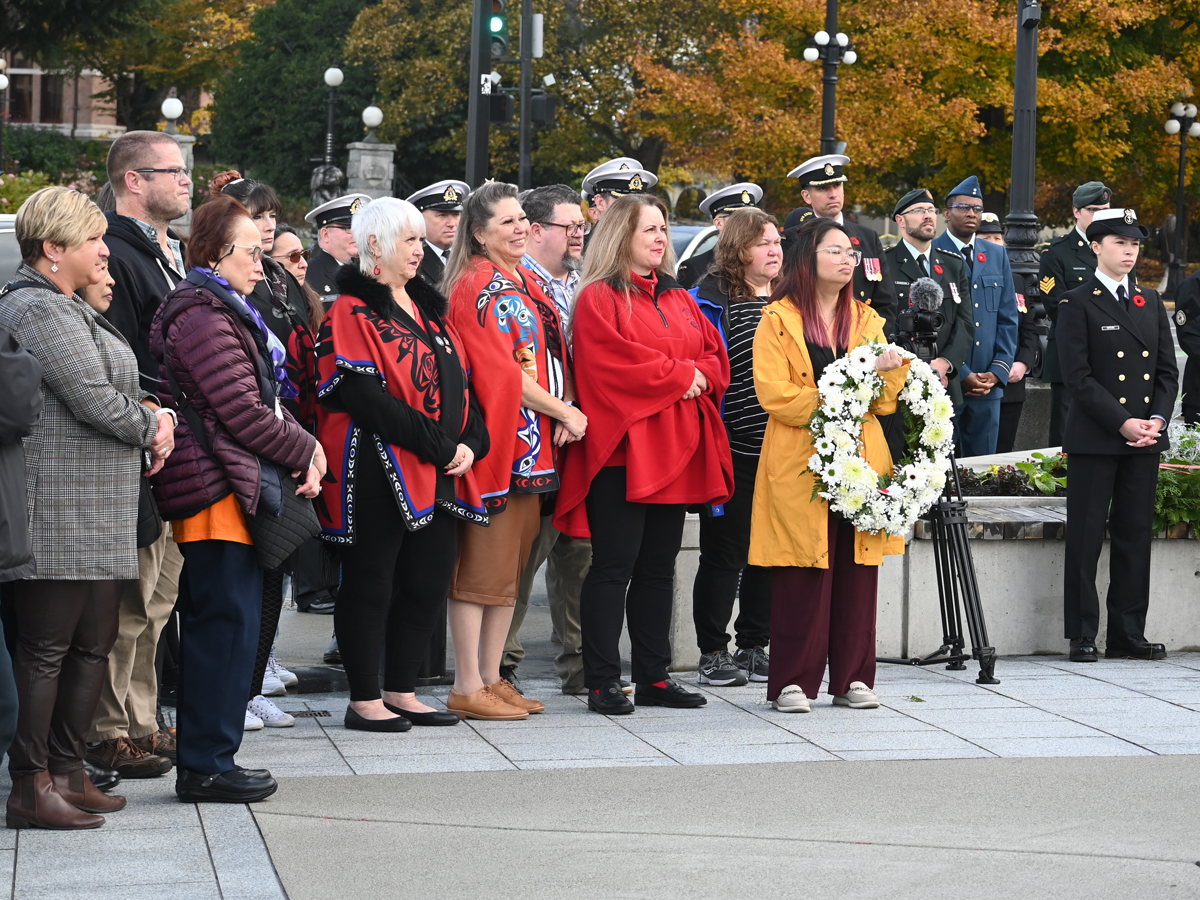National Indigenous Veterans Day: Honouring Indigenous Contributions
By Lookout Production on Nov 07, 2024 with Comments 0

Marie Ormiston,
Indigenous Engagement Officer, MARPAC
—
National Indigenous Veterans Day, observed on Nov. 8, honours the contributions of First Nations, Métis, and Inuit people who served in Canada’s military during the First World War (WWI), Second World War (WWII), and the Korean War. Recognizing this distinct day requires understanding the historical context of Remembrance Day.
Initially called Armistice Day, Remembrance Day was first observed in 1919 across the British Commonwealth to commemorate the armistice that ended WWI. For many veterans of that generation, Armistice Day was a complex occasion, blending joy at victory with sorrow for lost lives. It offered a collective moment to express gratitude for the sacrifices made for peace.
However, this recognition largely excluded Indigenous Veterans, who faced significant discrimination. They were not allowed to lay wreaths at cenotaphs or enter Legion Halls to celebrate with fellow soldiers.
Upon returning from service, many First Nation veterans discovered they had lost their Indian status due to the Gradual Enfranchisement Act of 1869, which penalized extended absences from reserves. This act created a process of ‘enfranchisement,’ forcing Indigenous members to choose between their status and participation in Canadian society, including military service.
Indigenous ex-servicemen were also denied the benefits of the War Veterans Act that their non-Indigenous counterparts received, including educational support and land grants. They faced a double screening process for pensions, requiring them to prove financial responsibility to Indian Agents before receiving any benefits.
The 1917 Soldier Settlement Act aimed to assist veterans in transitioning to civilian life by providing access to land and low-interest loans. However, Indigenous veterans were ineligible for these grants, though a small number did manage to secure loans.
During WWI, the Canadian government launched the ‘Greater Production Effort,’ which allowed the leasing of ‘idle Indian land’ to non-Indigenous farmers. This initiative was facilitated by amending the Indian Act in 1918, removing the requirement for Indigenous consent.
Despite not being recognized as citizens or having the right to vote, Indigenous people enlisted in disproportionately high numbers in WWI, WWII, and the Korean War. It is estimated that 12,000 Indigenous individuals served in these conflicts, with at least 500 losing their lives.
In WWI, nearly 4,000 Indigenous men enlisted, representing about one-third of able-bodied First Nation men aged 18-45. Notably, every man aged 20-35 from the Head of Lake Band in British Columbia enlisted.
Most Indigenous recruits served in the Canadian Army, as the Royal Canadian Air Force (RCAF) and Royal Canadian Navy (RCN) had discriminatory policies requiring volunteers to be ‘of pure European descent’ until the early 1940s. By mid-WWII, there were 29 Status Indians in the RCAF, nine in the RCN, and 1,800 in the Canadian Army.
National Indigenous Veterans Day began in Winnipeg on Nov. 8, 1994. By Nov. 11, 1995, Indigenous veterans were invited to lay wreaths at the National War Memorial in Ottawa.
In recent years, Canada, particularly the Defence Team (the Canadian Armed Forces and the Department of National Defence), has worked to improve its relationship with Indigenous peoples. The Defence Indigenous Advisory Group (DIAG), composed of Indigenous CAF members and public service employees, advises on policies affecting Indigenous members and recommends ways to create a more inclusive environment.
Programs such as the Indigenous Leadership Opportunity Year, Bold Eagle Program, Raven Program, and the Indigenous Entry Program offer culturally relevant pathways to recruitment. The Indigenous Career Navigator program, in partnership with the Knowledge Circle for Indigenous Inclusion, supports new and existing Indigenous public service employees.
A significant symbol of this evolving relationship is the Eagle Staff, representing strength, leadership, and unity. Indigenous leaders who carry the Eagle Staff are viewed as protectors of their communities.
At the 2023 Indigenous Veterans Day ceremony in Ottawa, Indigenous Advisor to the Chaplain General, Chief Petty Officer 2nd Class Patrick Stevens, emphasized the sacred duty of being a land protector and the importance of remembering the sacrifices of Indigenous veterans.
The Indigenous Veterans Day ceremony will take place on Friday, Nov. 8, at the BC Legislature Cenotaph at 10:45 AM, with shuttle services available for Defence Team members.
Indigenous Veteran’s Day, November 8
Dress is N1s and business attire for civilians
Shuttle pick up times & locations:
0900: Work Point (Kingsmill Building)
0920: Dockyard Main Gate
0940: Nelles Block
1000: Drop off at the Victoria Cenotaph
1045-1115: Ceremony
1145: Pick up at the Victoria Cenotaph
1205: Nelles Block
1225: Dockyard Main Gate
1240: Work Point
Filed Under: News Release • Top Stories
About the Author:





